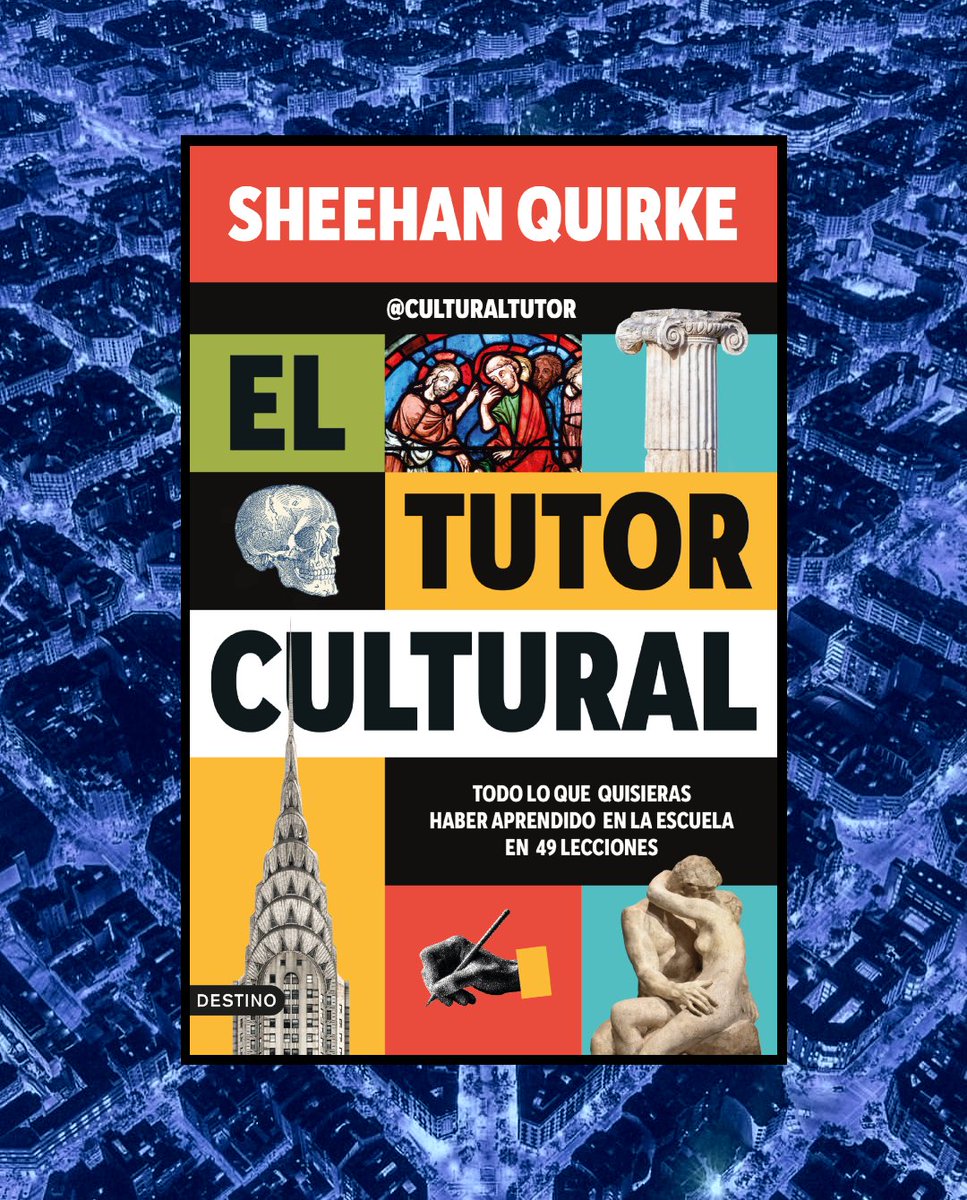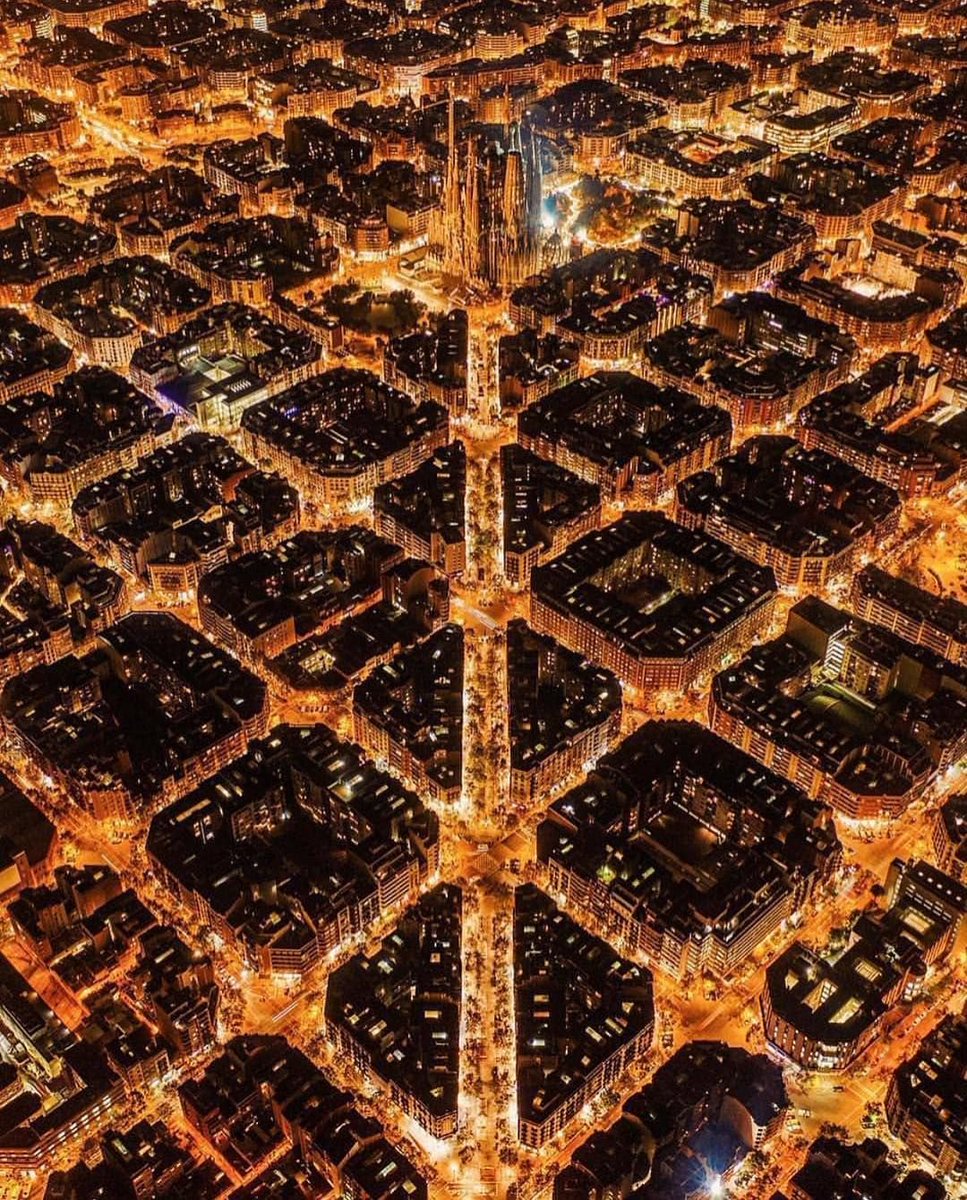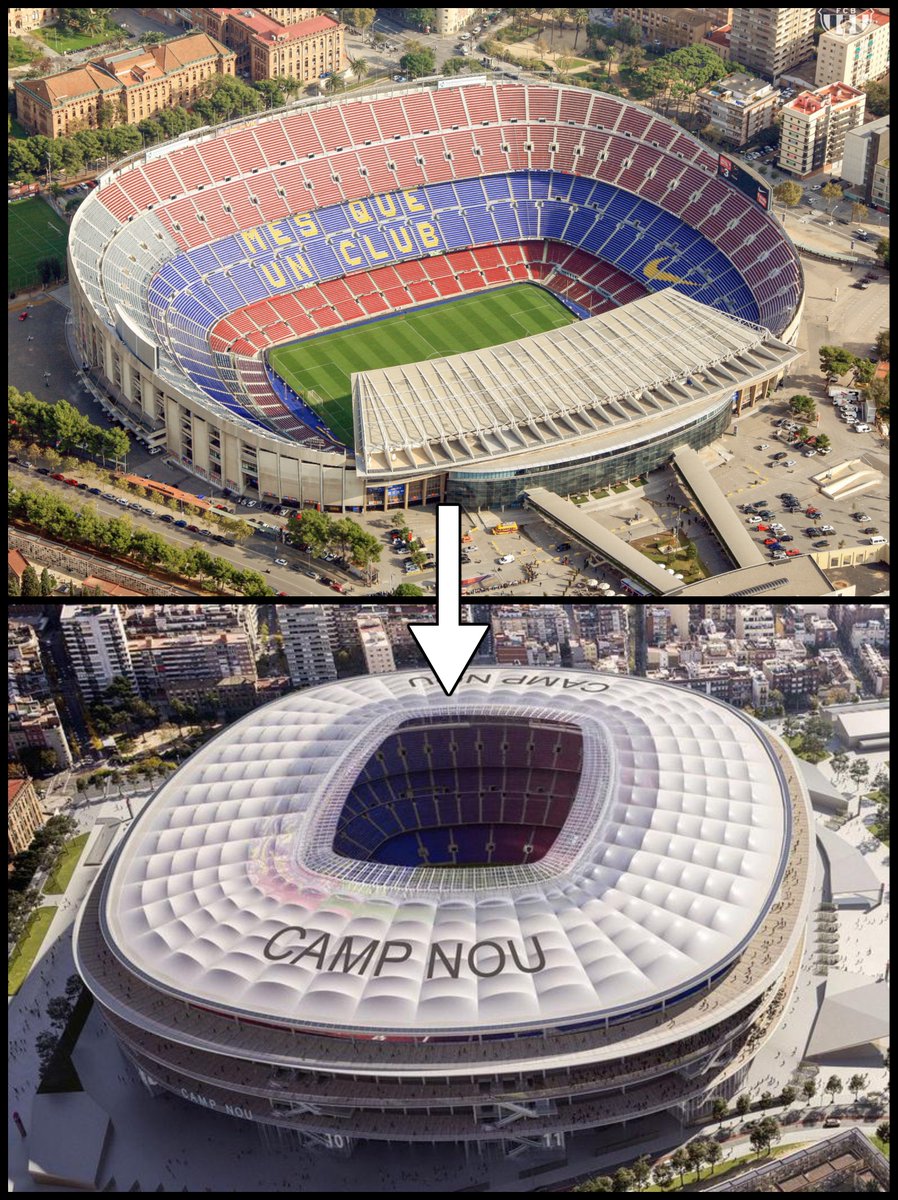Why does Argentina wear a pale blue and white football kit?
It's a story that involves the Byzantine Empire, Renaissance painters, Napoleon, and a revolution...
It's a story that involves the Byzantine Empire, Renaissance painters, Napoleon, and a revolution...
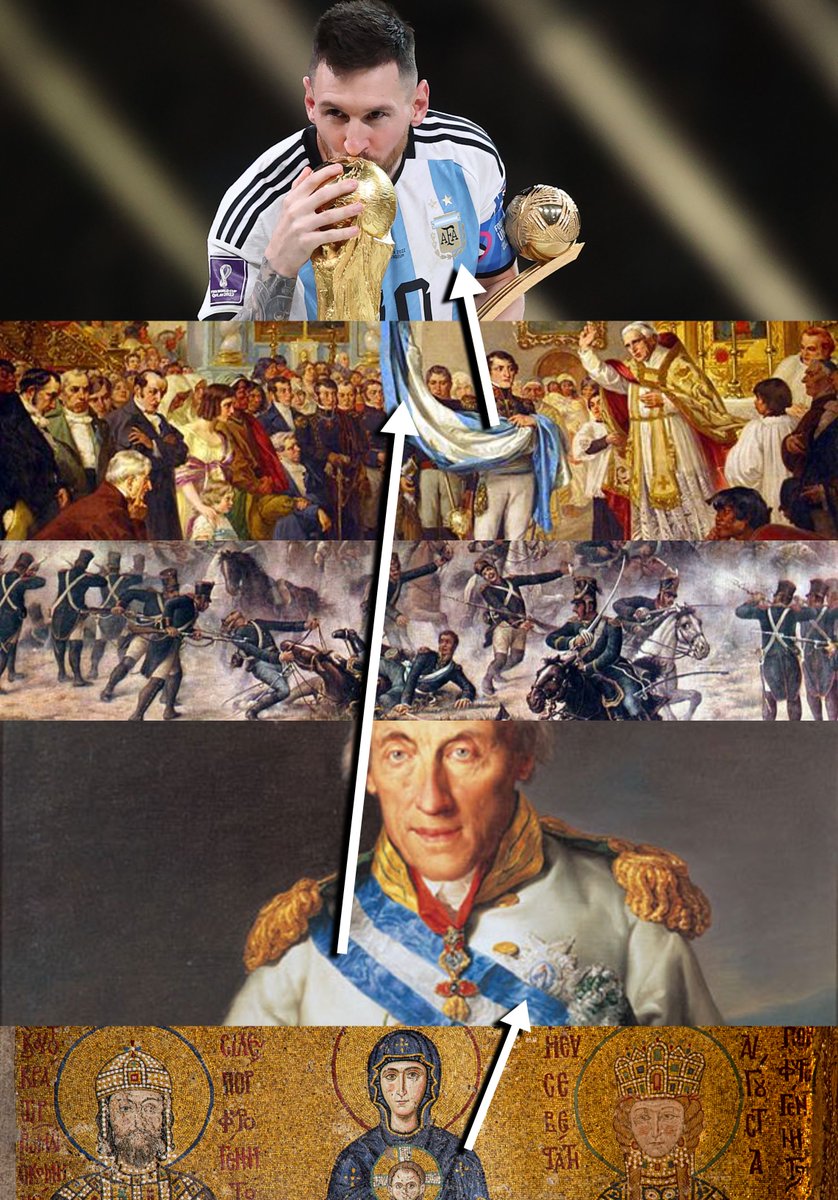
In the Byzantine Empire, which was the continuation of the eastern half of the Roman Empire, the colour blue was regarded as the colour of the nobility and of the emperor and empress.
Blue was an expensive colour. It brought great social prestige and came to symbolise majesty.
Blue was an expensive colour. It brought great social prestige and came to symbolise majesty.
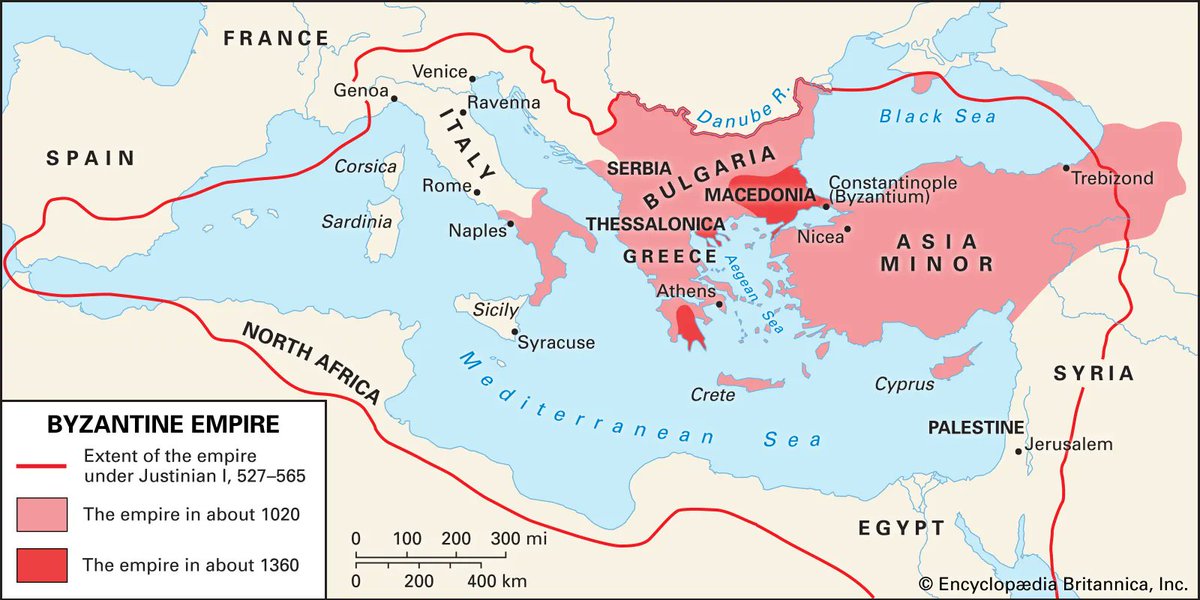
And with the rise of the worship of St Mary, artists decided to depict her wearing blue robes. She was an important and revered figure. What better way to elevate her?
Byzantine mosaics from the 5th century onwards used someting called azurite for her robes.
Byzantine mosaics from the 5th century onwards used someting called azurite for her robes.
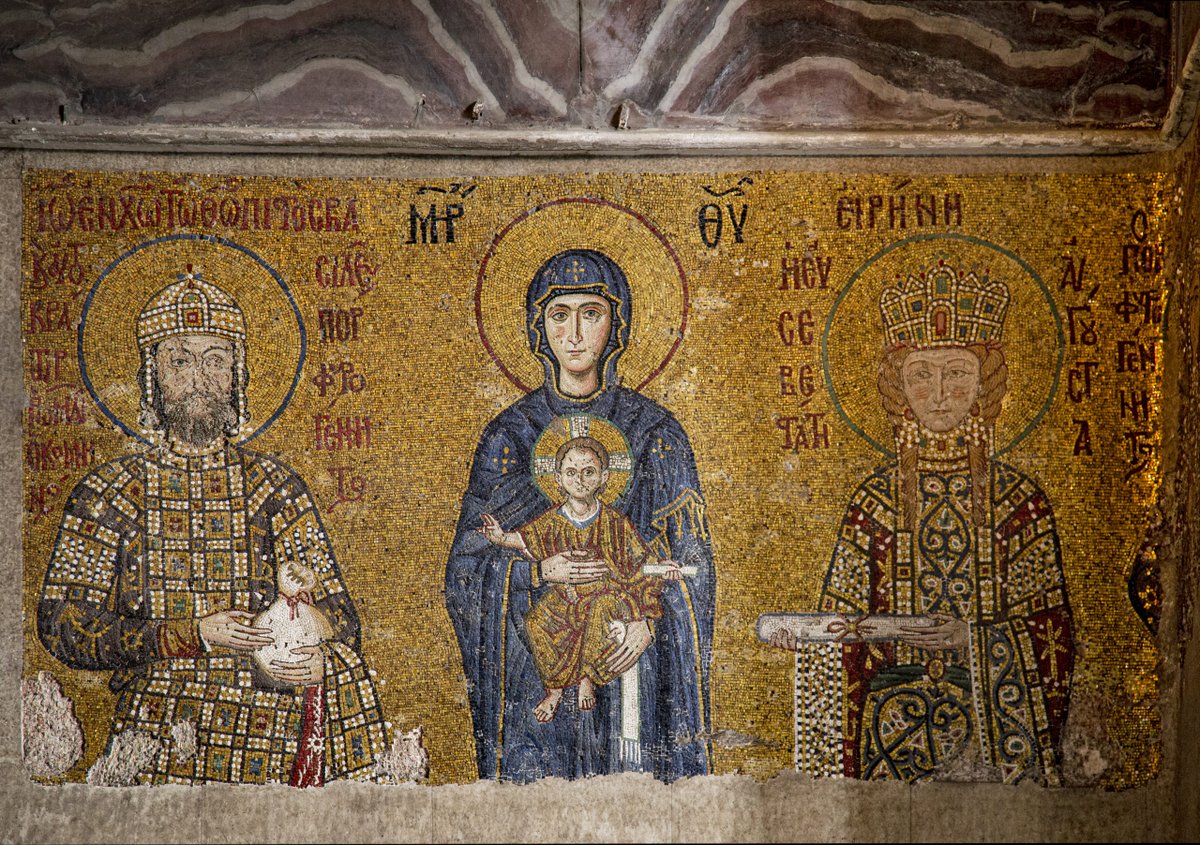
The use of blue for Mary's clothes soon became a central part of artistic and religious tradition.
In the Renaissance artists would use lapis lazuli - which came from mines in Afghanistan and was more expensive than gold - to create the paint for her robes.
In the Renaissance artists would use lapis lazuli - which came from mines in Afghanistan and was more expensive than gold - to create the paint for her robes.
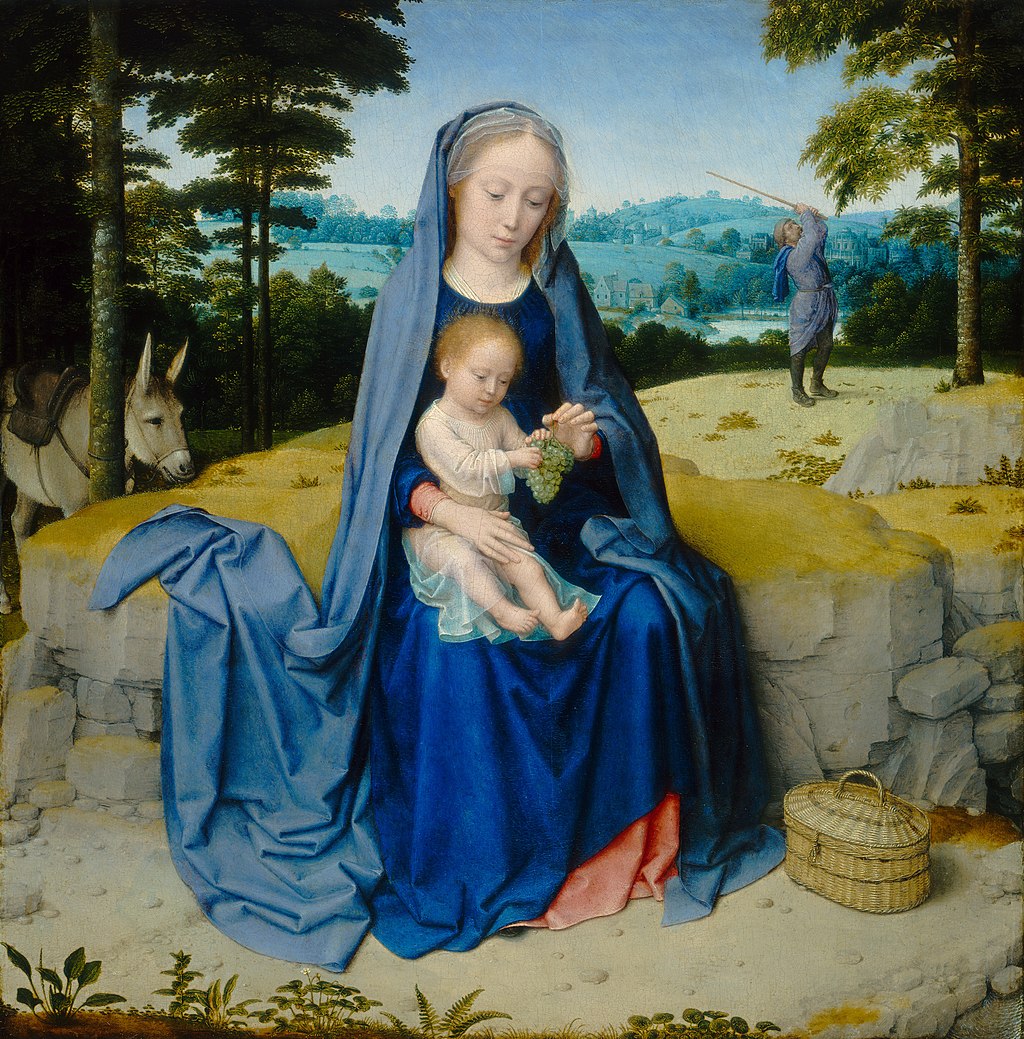
Since Italian traders brought lapis lazuli from so far away, the pigment it created became known as "ultramarinus". In Latin that means "from over the sea".
Ultramarine was a deep and brilliant shade of blue, prized for its beauty and rarity.
Ultramarine was a deep and brilliant shade of blue, prized for its beauty and rarity.
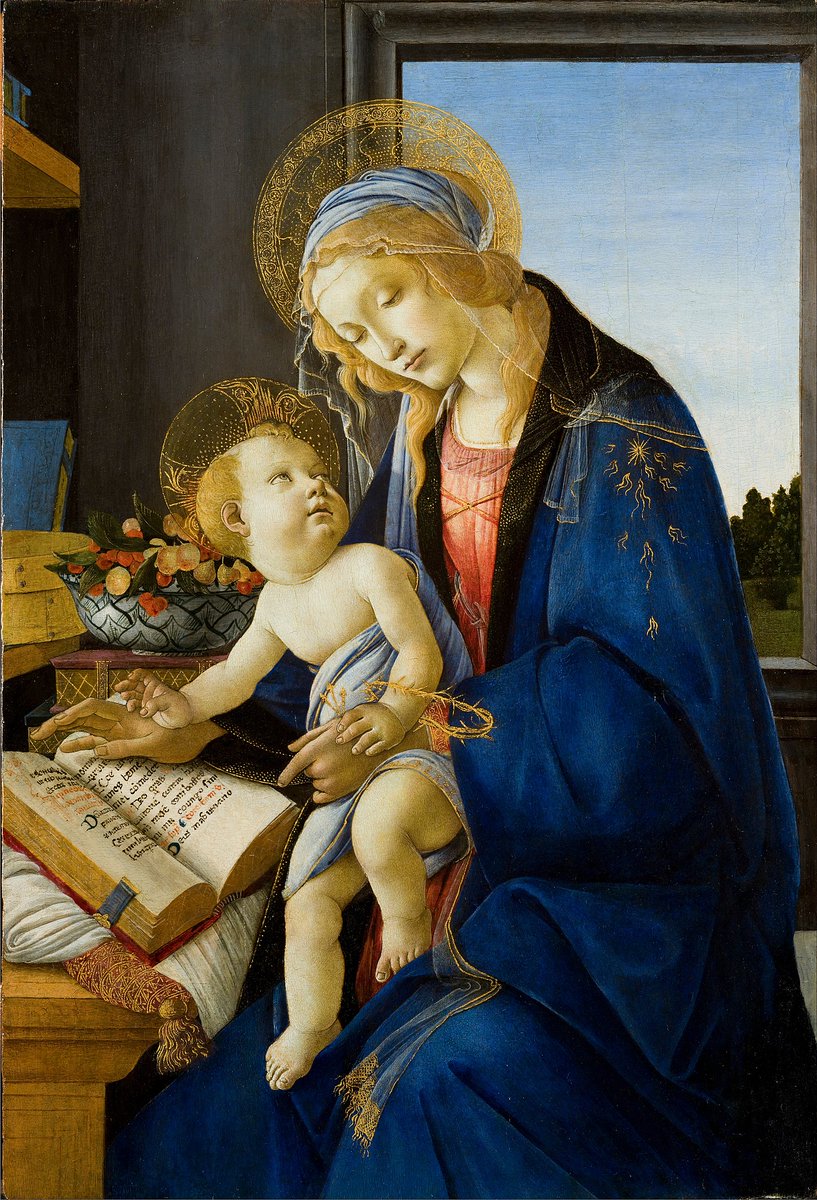
Anyway, in the 18th century Charles III was King of Spain.
His son and heir, also called Charles, had been married for five years without producing any children of his own...
(Remember, the Spanish Empire ruled Argentina at this point in history)
His son and heir, also called Charles, had been married for five years without producing any children of his own...
(Remember, the Spanish Empire ruled Argentina at this point in history)

When his son did finally have a child, King Charles III was delighted.
And so he created something called the Order of Charles III in 1771 to mark the occasion, a sort of special society for prominent Spaniards.
And every Order must have its colours for members to wear...
And so he created something called the Order of Charles III in 1771 to mark the occasion, a sort of special society for prominent Spaniards.
And every Order must have its colours for members to wear...
Charles III had prayed to St Mary her during those many years of waiting for his son to have a child.
So for the colours of his new Order Charles chose blue - Mary's colour - and combined it with white.
Here is Charles IV wearing the sash of his father's Order. Seem familiar?
So for the colours of his new Order Charles chose blue - Mary's colour - and combined it with white.
Here is Charles IV wearing the sash of his father's Order. Seem familiar?

You'll notice that Charles III had chosen a blue significantly paler than usual depictions of Mary.
Well, here's a painting of Mary from 1767 by Giovanni Battista Tiepolo - look at the light blue of its robes. This painting was commissioned by Charles III!
Well, here's a painting of Mary from 1767 by Giovanni Battista Tiepolo - look at the light blue of its robes. This painting was commissioned by Charles III!
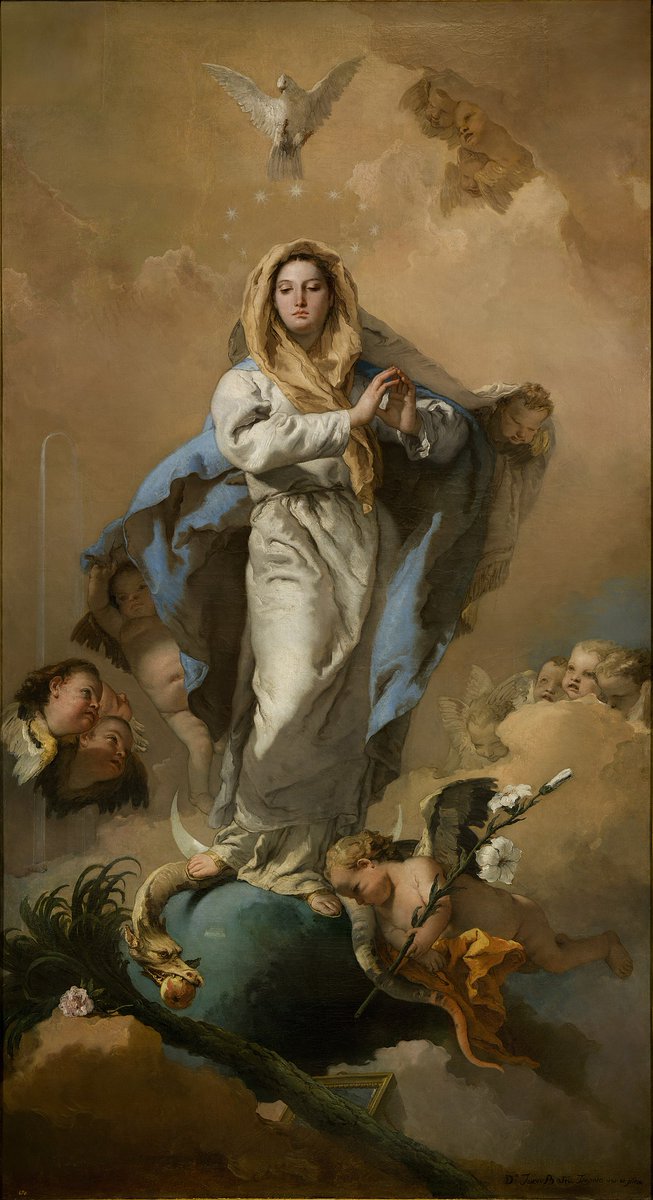
Anyway, by the year 1808 Napoleon had burst onto the scene and started tearing his way through Europe.
He forced King Ferdinand VII (Charles III's grandson) to abdicate. Napoloen then placed his brother, Joseph Bonaparte, on the Spanish throne instead.
This sparked revolts.
He forced King Ferdinand VII (Charles III's grandson) to abdicate. Napoloen then placed his brother, Joseph Bonaparte, on the Spanish throne instead.
This sparked revolts.
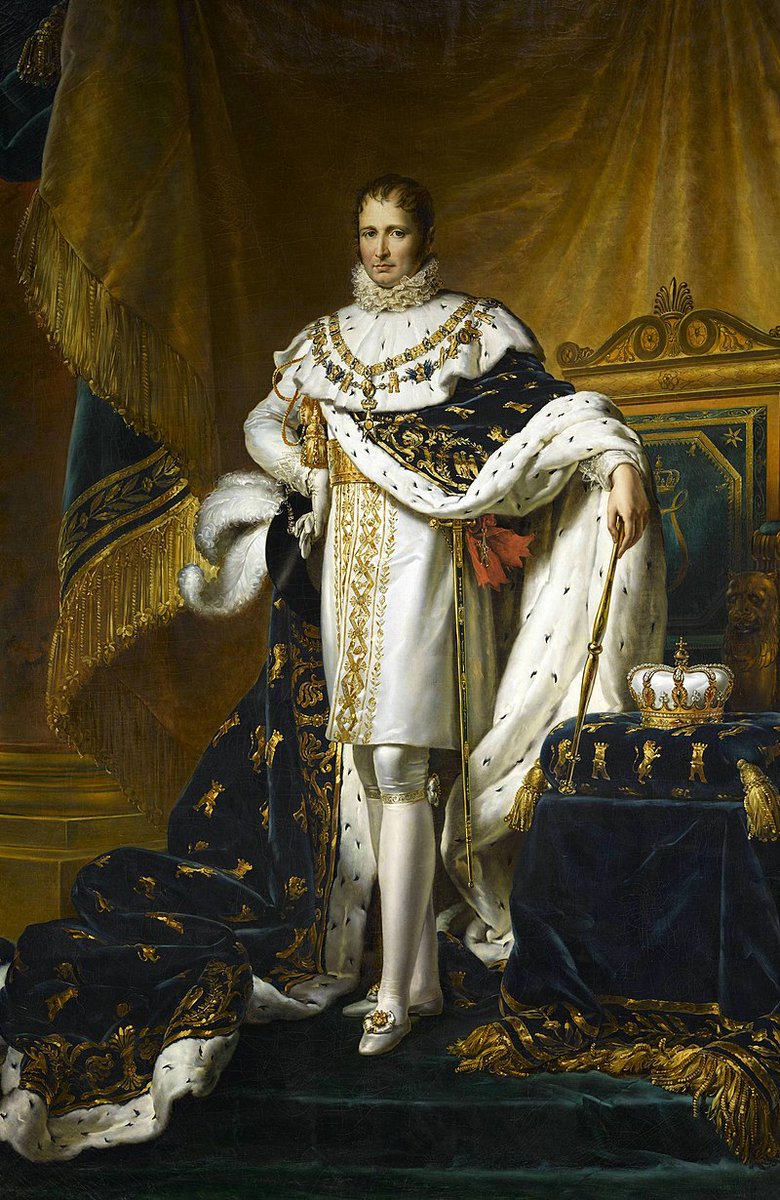
Not just in Spain, but in Argentina too.
To show their allegiance to the true monarch of Spain, Argentinian rebels wore the colours of the Order of Charles III - pale blue and white - to distinguish themselves from Bonapartist fighters and show loyalty to Ferdinand, seen here:
To show their allegiance to the true monarch of Spain, Argentinian rebels wore the colours of the Order of Charles III - pale blue and white - to distinguish themselves from Bonapartist fighters and show loyalty to Ferdinand, seen here:
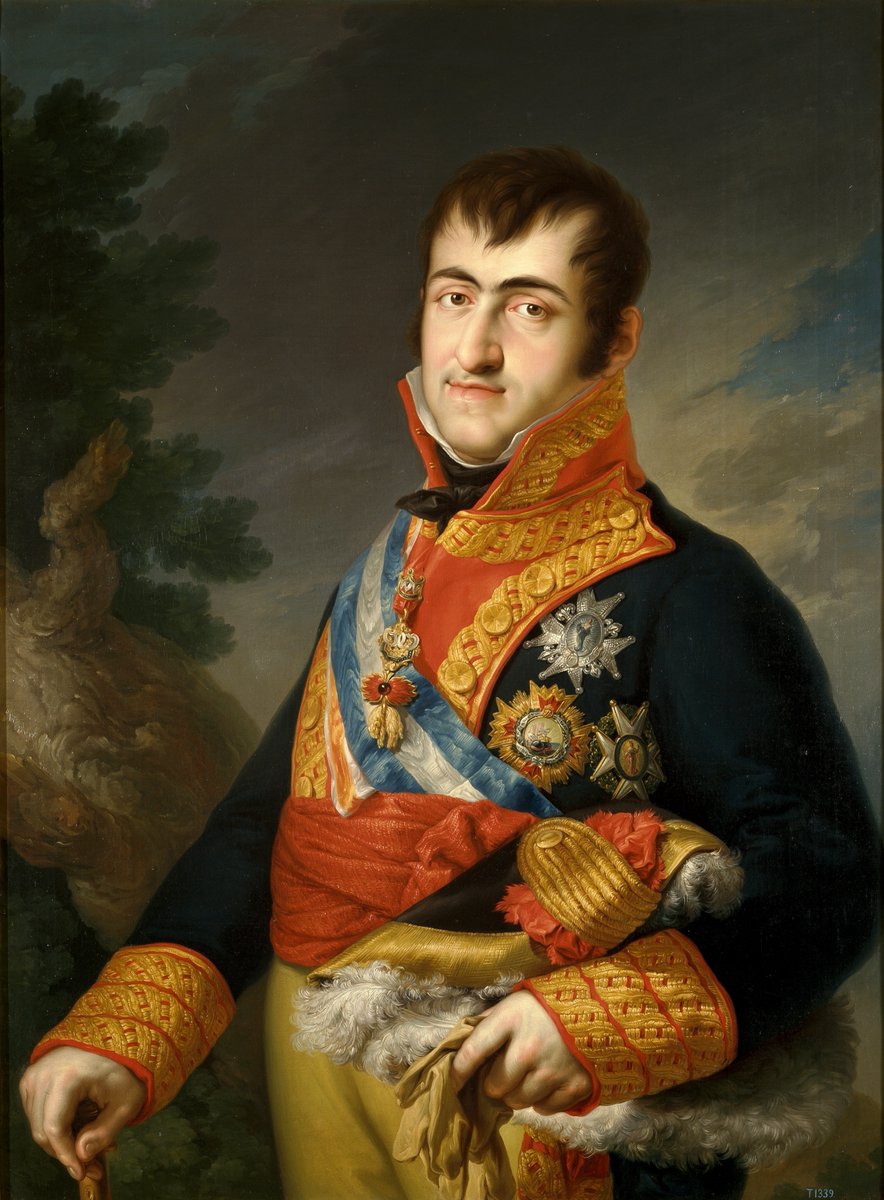
Two years later, in 1810, the Argentinian War of Independence broke out.
And in 1812 its leader, Manuel Belgrano, created the Cockade of Argentina, a symbol used to distinguish revolutionary forces from those of the royalists.
(A cockade is a knot of ribbon)
And in 1812 its leader, Manuel Belgrano, created the Cockade of Argentina, a symbol used to distinguish revolutionary forces from those of the royalists.
(A cockade is a knot of ribbon)
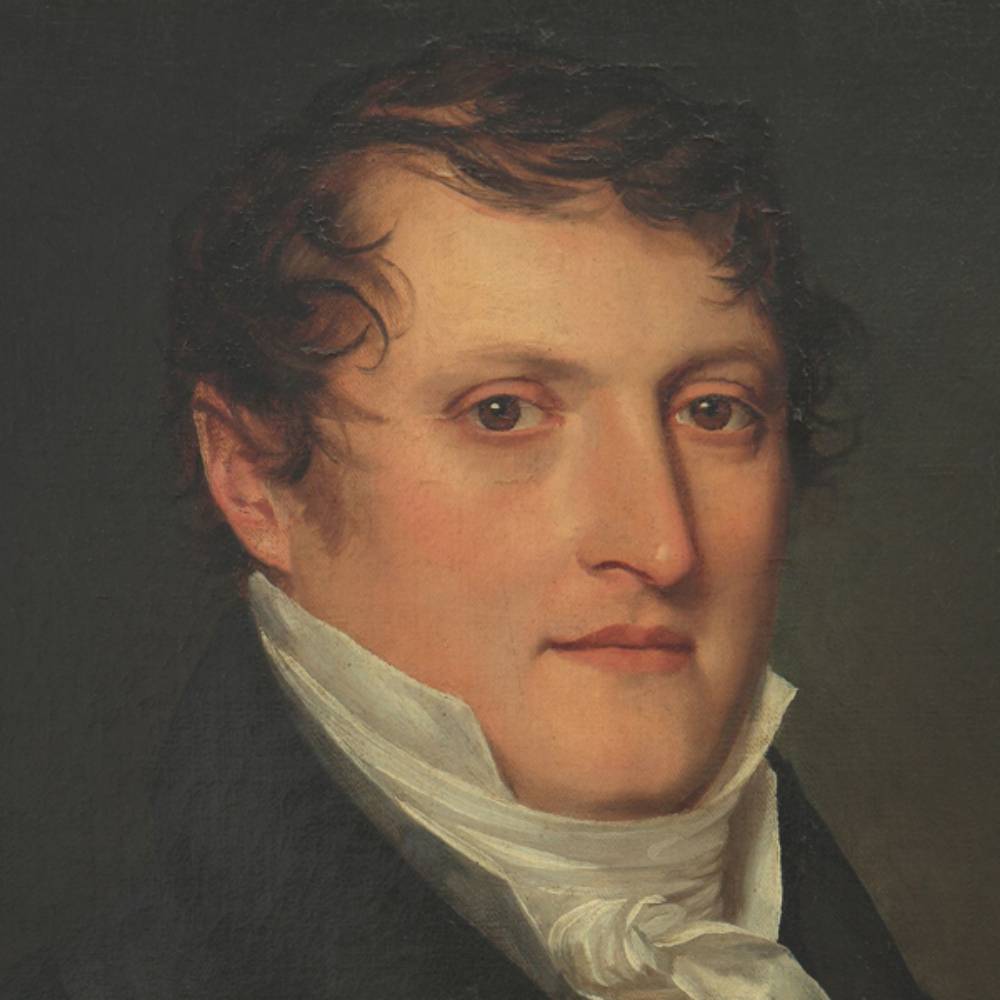
And he used colours previously associated with Argentinian revolt from Spanish rule under Joseph Bonaparte - the pale blue and white the Order of King Charles III and of the true monarchy.
The revolutionary government officially adopted the Cockade.
The revolutionary government officially adopted the Cockade.
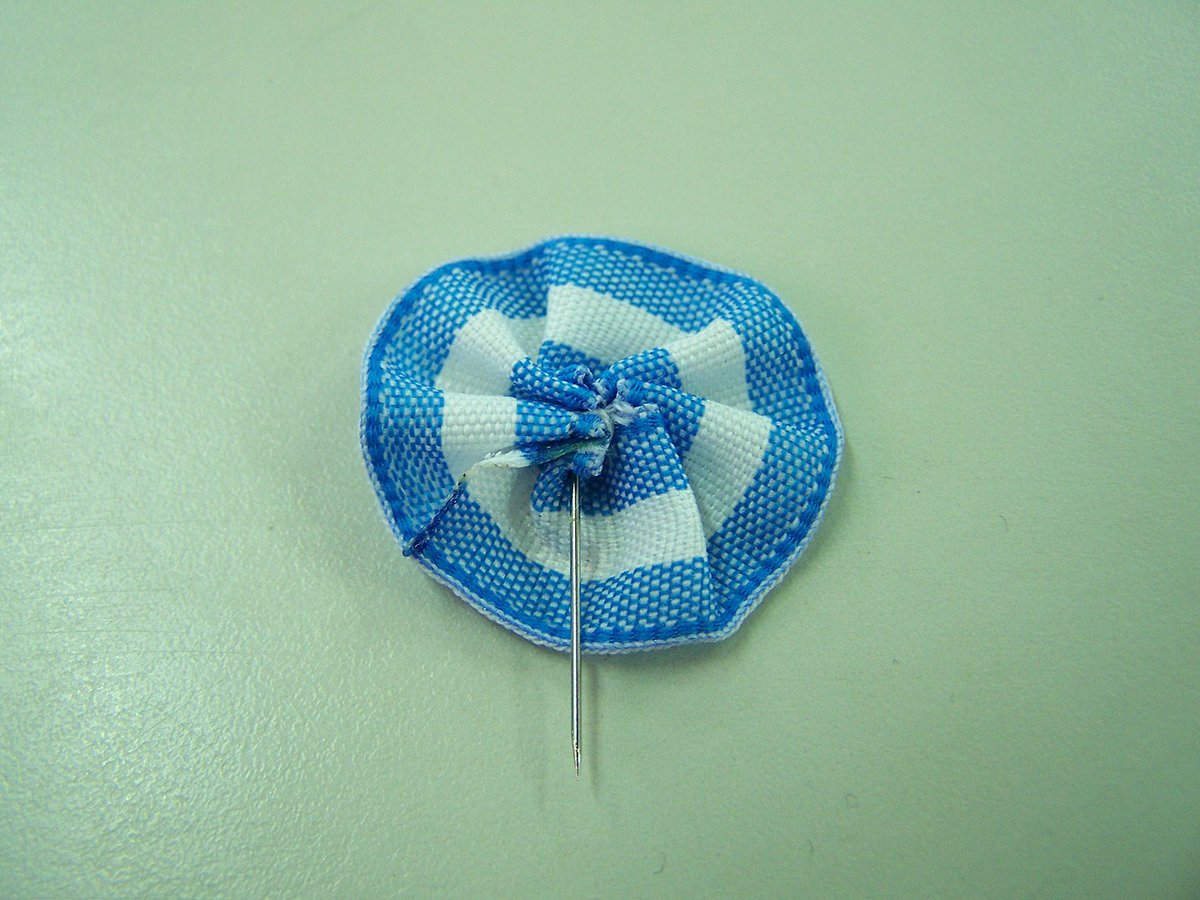
Belgrano designed the flag of Argentina just days afterwards, and he used the same colours.
A few mishaps, changes of government, battles, and years later, Belgrano's design was adopted as the official flag of independent Argentina, in 1816.
The sun was added in 1818.

A few mishaps, changes of government, battles, and years later, Belgrano's design was adopted as the official flag of independent Argentina, in 1816.
The sun was added in 1818.
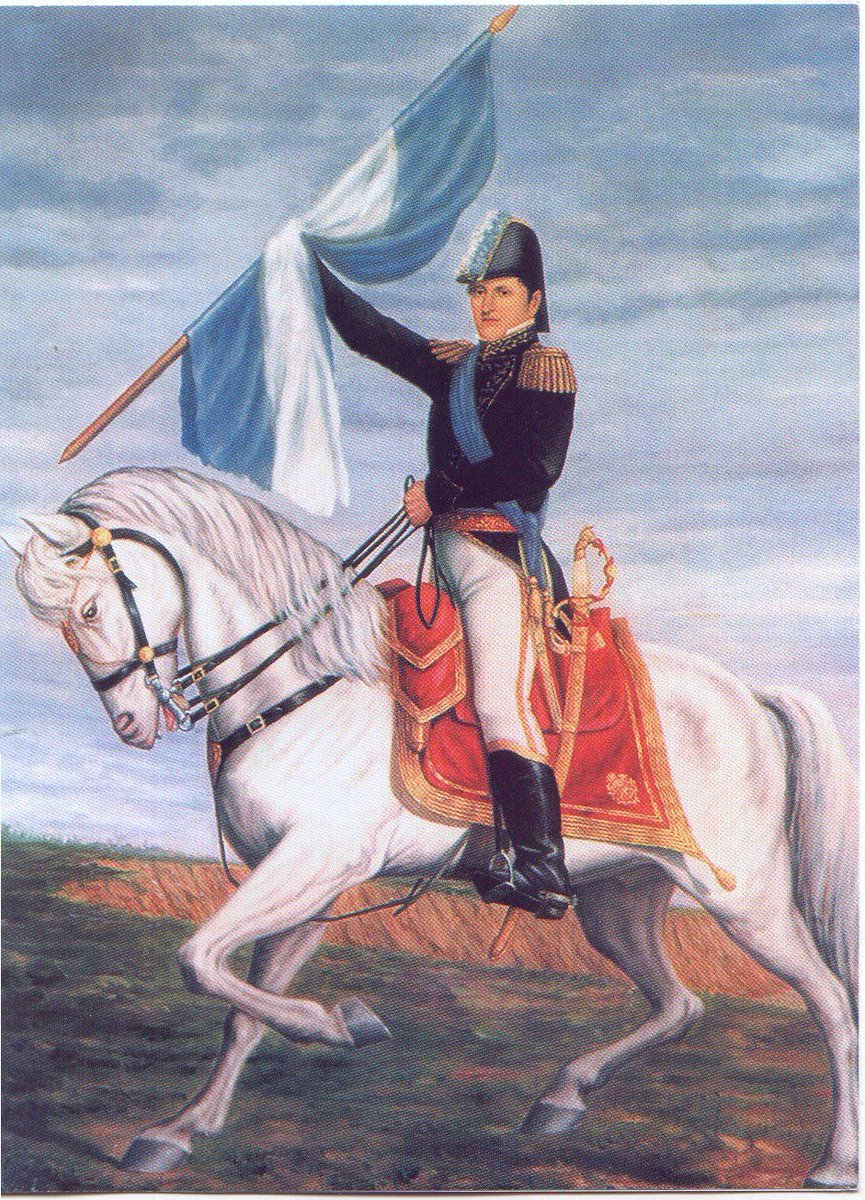

When Belgrano first presented his design to the people he compared its colours to the sky and the clouds.
That has been interpreted to mean they were his inspiration. Which makes sense, given Argentina's incredible natural landscapes.
But it was from Charles III that they came.
That has been interpreted to mean they were his inspiration. Which makes sense, given Argentina's incredible natural landscapes.
But it was from Charles III that they came.
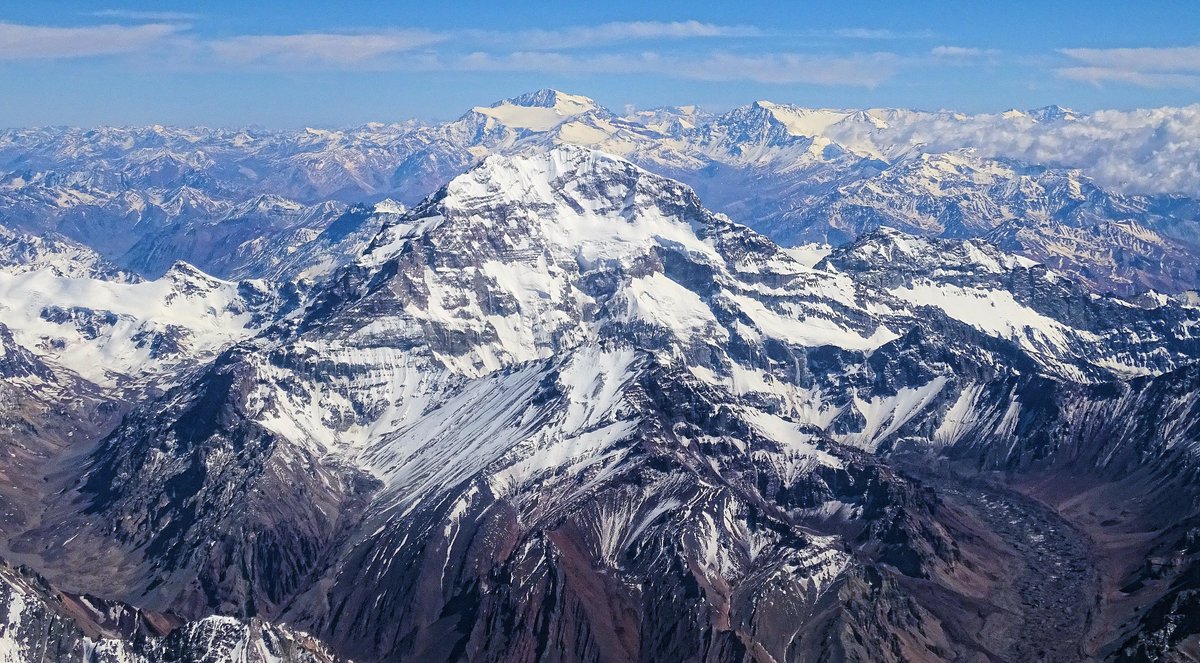
Fast forward a few decades and in the 1880s a sport called football arrived in Argentina via British railworkers, who passed it on to the locals.
Football took off. By 1891 they had their first league (the 5th oldest in the world) and in 1893 they'd founded an FA.
Football took off. By 1891 they had their first league (the 5th oldest in the world) and in 1893 they'd founded an FA.
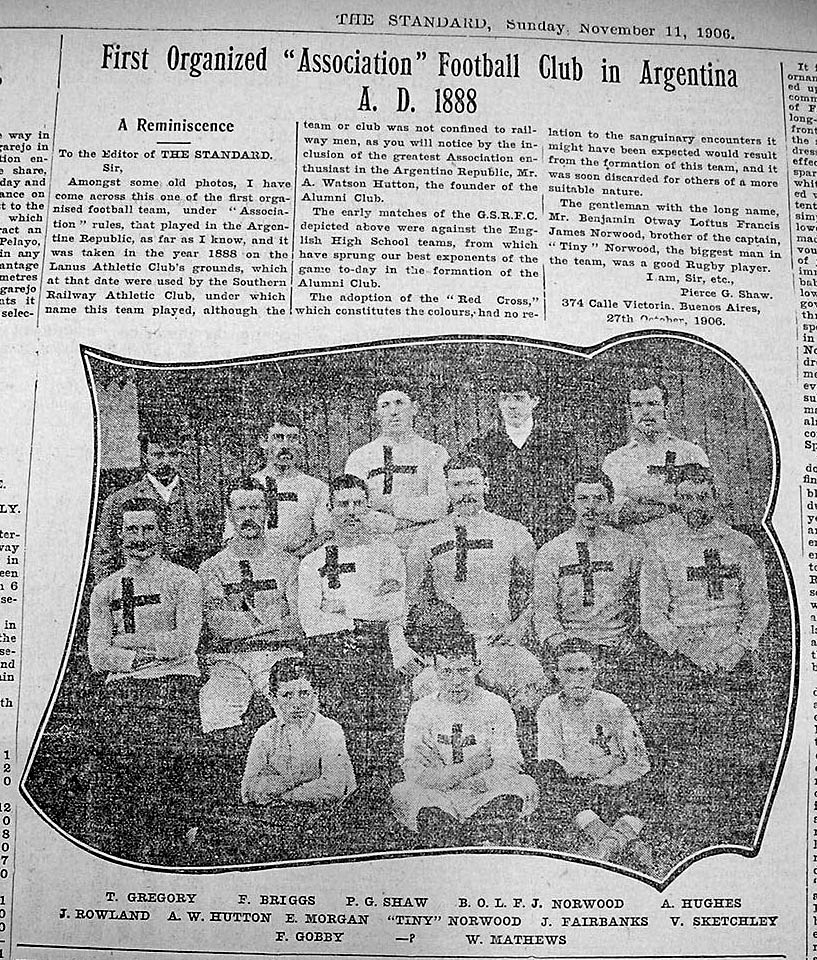
The Argentina National Team wore a pale blue shirt for their debut against Uruguay in 1902.
But six years later, in 1908, they played an all-star team from the Brazilian League in a kit of white and pale blue stripes.
But six years later, in 1908, they played an all-star team from the Brazilian League in a kit of white and pale blue stripes.
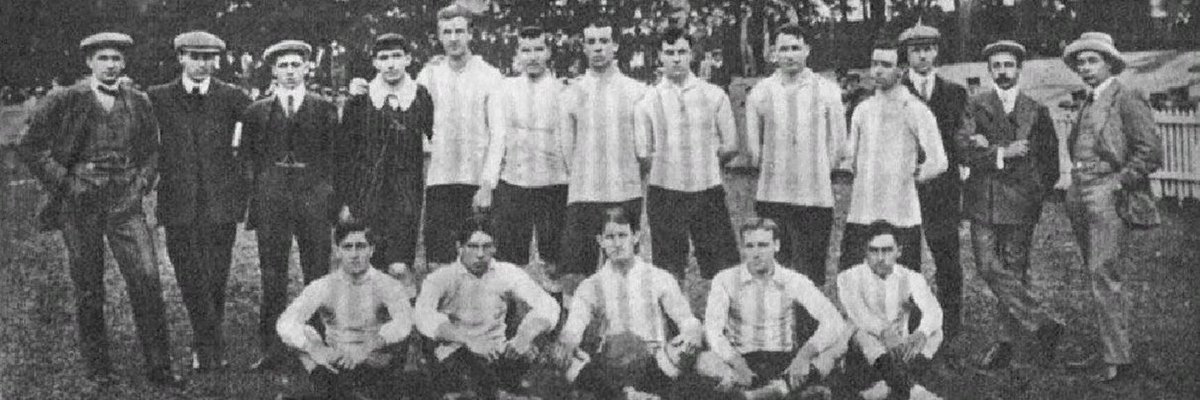
114 years later Argentina still wear those same colours, adopted from their flag, which itself was the result of a centuries-long series of political, religious, and artistic developments.
A long history for one of football's most iconic kits.
A long history for one of football's most iconic kits.

• • •
Missing some Tweet in this thread? You can try to
force a refresh
















